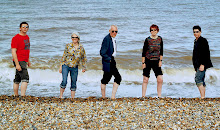
When I first visited rural southern France in the early 70s, some farmers were still ploughing with oxen. Even now, you can find old ox-ploughs rusting under a hedge – where there are still hedges. My parents have lived there nearly 30 years, and during that time we have seen farmers retire, their children move away, cattle sold, vineyards grubbed up, fields amalgamated, and the growth of tourism.
In La Vie Moderne photojournalist Raymond Depardon records the life of farmers in the Cévennes. It is part of an ongoing project dear to his heart. As a farmer's son, he has a great sympathy for them, and they open up to him as best they can, though it’s clear some of them are not completely at ease with the camera. The interiors are so familiar: the solemn pendule in the background, the open fire, the long kitchen table with the oilcloth, the plate of vanilla flavoured biscuits, the scuffed tin of sugarcubes pushed towards the visitor for the bitter coffee. You have to keep them in a tin because of mice.
The landscape is achingly beautiful. To strains of Fauré, the camera tracks up and down narrow country lanes, dives into valleys, past snowbound forests and shuttered houses, halts at a barbed wire gate. The people who scrape a living from the mountainside are dying out. Villages are ghosts of themselves. It’s heartbreaking to hear the stories, to contemplate the passing of a whole way of life, something which for generations had seemed so permanent. The way of life was backbreaking and brought little reward. Young people these days demand more. It is the loss of a culture. The loss of the language (Occitan) began even earlier.
Even here they now use tractors. Little of the old soundscape remains now but the bells on the brebis as they scramble down over the rocks to their barn for the night.
The film makes no argument beyond presenting a few farmers and their families to talk about the hardships of their existence, their hopes and fears for the future. The first family consisted of two elderly bachelor brothers and their nephew, who had got himself a wife from up North via a lonely hearts ad. He seemed well pleased with life, apparently oblivious to the jealousy and pain occasioned by the introduction of his new family - a wife and her daughter, people from elsewhere, who didn't understand the district, or farming, and showed insufficient deference to their elders.
One of the most poignant was a man who lived alone in a state of some neglect. His hair was long and matted, and he chainsmoked. For the entire session, he was glued to his ancient television watching the funeral mass for Abbé Pierre (founder of Emmaus). Without taking his eyes off the screen, he answered the questions almost monosyllabically:
- Are you a Catholic?
- No.
- Were you baptised a Catholic?
- No. I’m Protestant.
- Do you go to church?
- No.
And so on. I found all this disconcerting. The television was clearly his constant companion, and on this occasion enabled him to share in a national day of mourning. It seemed rather rude to persist in questioning when the interviewer had dropped in unannounced on this particular day. For all his sensitivity elsewhere, Depardon seemed curiously unalert in this instance - except that it made a telling piece of film, albeit partly at his own expense.
Although the film has received rave notices, it is not an obvious hit. There is little pacing, no polemic. There are odd flashes of wit but nothing to stop the viewer from nodding off for a minute or two. The voice of the interviewer slows things down, keeping a sense of distance between audience and subject.
I never saw any of those programmes about Hannah Hauxwell, but suspect that focusing on one family in the Cévennes might have made more engaging viewing than La Vie Moderne in its dutiful progress round the valleys. But Depardon’s aim is to be more faithfully representative of the different types of farmer and family set-ups. He is more of a collector than a specialist. Nor is this a visual Akenfield. We are so used to documentaries which edit out the questions, giving the impression that the participants are speaking freely for themselves, that the questioning, with all the rephrasings, repetitions – one of the participants was pretty deaf – and awkward silences, feels rough-hewn. Perhaps the documentary maker who is also a photojournalist wishes to display more regard for the “truth” of the present moment, even if that includes the non-answer and considerable longueurs. Why not say what happened? Yet he doesn't hesitate to stage a shot, to position the camera in the best place - the far side of a cow who is crumpled on the floor with mastitis, her grieving owner beyond... And heaven knows what went on the cutting room floor. As a photographer, he'd be used to culling the one image out of a thousand. Perhaps it's a category error to want something more rigorous from a documentary too.
However, that's a personal gripe that no-one else seems to share. And this is without question a valuable record of the remnants of a community that will have disappeared the way of the ox-plough within a generation.



No comments:
Post a Comment